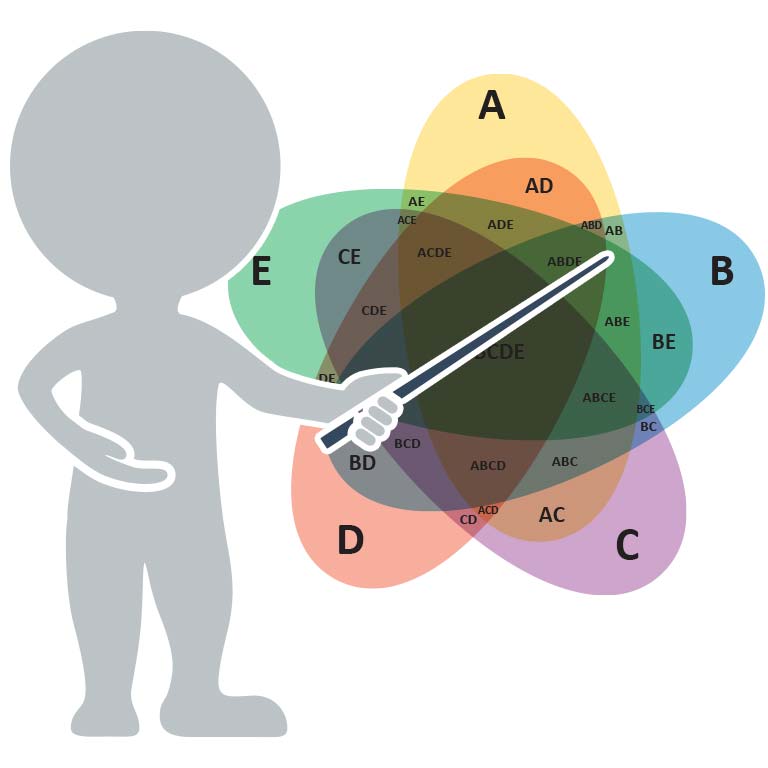Now in its sixth year, the Orchestra Website Review generates a great deal of interest regarding how orchestras of vastly different budget size can be compared on an even playing field. Happily, the answer is very straightforward…

In order to adequately examine an orchestra website it is useful to define the factors which contribute to an effective offering. At the core of every good orchestra website is the ability to generate revenue and create awareness which is accomplished through six distinct channels, each containing well defined quantifiable elements. When orchestra websites are examined from this perspective it becomes a straightforward process to identify the key elements for each section; as such, whether or not an orchestra has a budget that accommodates professional graphic design and employ full-time website specialists capable of creating an aesthetic web signature isn’t as important as designing a website that allows users to easily absorb crucial information and bolster the core goals.
As a result, these websites were not examined on the subjective basis of color schemes, layout, graphics, or other aesthetic qualities so long as those issues did not have a negative impact on basic functionality and site performance. By conducting the reviews under these conditions, evaluations are not only fair but orchestras of varying budget size can be evaluated on an even playing field.
Evaluation Criteria: Targeted refinements define 2009
Compared to the major modifications integrated into the 2008 review, this year’s review incorporated a few minor adjustments to point values and criteria distinction. Consequently, the 2009 review continues to focus on a SLATES based platform. Defined by Andrew P. McAfee, associate professor with the Technology and Operations Management Unit at Harvard Business School, you can learn more about SLATES here.
Orchestra websites were graded on six categories, each with multiple sub-categories:
Category 1: Performance Schedule – 20 points maximum
 Patrons need to be able to log onto an orchestra’s website and be able to gather information about the latest performances as well as upcoming events directly from the home page.
Patrons need to be able to log onto an orchestra’s website and be able to gather information about the latest performances as well as upcoming events directly from the home page.- This category contains two sub-categories which covered layout & organization features as well as monthly concert schedule displayed in a calendar-style navigation.
Category 2: Purchasing Tickets – 20 points maximum
 In addition to being able to find concert information quickly, patrons also need to be able to securely complete a ticket purchase for any given performance in no more than five minutes.
In addition to being able to find concert information quickly, patrons also need to be able to securely complete a ticket purchase for any given performance in no more than five minutes.- This category contains five sub-categories covering features such as single ticket and subscription sales, ability to select seating, box office information, and secure purchasing options.
Category 3: Making Donations – 20 points maximum
 There isn’t a professional orchestra in the U.S. that doesn’t need donations. As such, encouraging patrons to donate online to a variety of programs is a crucial component for every orchestra website.
There isn’t a professional orchestra in the U.S. that doesn’t need donations. As such, encouraging patrons to donate online to a variety of programs is a crucial component for every orchestra website.- This category contains two sub-categories addressing issues such as providing secure commerce servers and a variety of one time and preplanned giving options.
Category 4: Orchestra Information – 15 points maximum
 Learning about an orchestra and having easy access to contact information and educational program information is crucial to an orchestra’s ability to establish meaningful connections with its community.
Learning about an orchestra and having easy access to contact information and educational program information is crucial to an orchestra’s ability to establish meaningful connections with its community.- This category contains five sub-categories covering biographical and contact information for music directors and musicians. Staff and board listings with related individual contact info were also considered essential as well as providing copies of institutional transparency documents.
Category 5: Dynamic Content – 15 points maximum
 This category contains the bulk of evaluation criteria and incorporates the bulk of material defined by the SLATES criteria.
This category contains the bulk of evaluation criteria and incorporates the bulk of material defined by the SLATES criteria.- This category contains five subcategories including educational offerings, traditional media content, and PR contact information from previous reviews as well as introducing sub-categories measuring how well each website utilizes extensions, signals, and authoring tools.
Category 6: Functionality – 10 points maximum
 If patrons can’t find your website then it won’t really matter how nice of a site you develop. Orchestras need to be able to present large amounts of information and e-commerce solutions to their patrons without overloading them or making it difficult to find what they need. Accuracy, current information, uniqueness of offerings, and providing institutional transparency documents all play an important role in this category.
If patrons can’t find your website then it won’t really matter how nice of a site you develop. Orchestras need to be able to present large amounts of information and e-commerce solutions to their patrons without overloading them or making it difficult to find what they need. Accuracy, current information, uniqueness of offerings, and providing institutional transparency documents all play an important role in this category.- This category contains five sub-categories covering issues such as URL clarity, navigation structure, “searchability,” site performance, and legal notices.
Power To The Readers!
 After years of hearing from readers about which features they find important in an orchestra website but never having a way for them to incorporate them into the reviews, I am very happy to announce that 2009 will be different. This year’s examination will give you the opportunity to rate each orchestra website included in the review yourself.
After years of hearing from readers about which features they find important in an orchestra website but never having a way for them to incorporate them into the reviews, I am very happy to announce that 2009 will be different. This year’s examination will give you the opportunity to rate each orchestra website included in the review yourself.
You’ll be able to rate each website included in the review using a 5-star rating system like the one used by Amazon.com and if you wish to offer more in-depth observations, you can leave a review comment. Links to each website are provided so you don’t have to track down any sites on your own and unless you have the time to sit down and go through 82 U.S. and 14 Canadian orchestra websites in one sitting, know that there are no minimum numbers of ratings/reviews required to participate and you can submit them using your own schedule. If you aren’t sure where to start there’s a useful FAQ guide at the top of the reader review page to walk you through the entire process. I’m looking forward to seeing what readers think
The results will be examined in the final article from this year’s series but it’s not too late to vote so head over to the reader review page and let your voice be heard (FYI, orchestra employees are encouraged to participate).
Who’s In, Who’s Out

New for 2009 review is the addition of Orchestra Iowa (formerly Cedar Rapids Symphony Orchestra) and none of last year’s orchestras were removed. In order to determine if your orchestra qualifies to be included in the review, take a moment to answer four simple YES/NO questions (a list of organizations included in this year’s review is located at the end of the post):
- Organization: Is your ensemble organized as a full time a symphonic or chamber orchestra?
- Location: Is your organization located in the United States or Canada?
- Budget*: Is the amount in Part 1, Line 17 (Total Expenditures) from your 2006/07 IRS Form 990 $2 million or greater?
- Artistic Representation: Are your orchestra musicians represented by a collective bargaining agreement and a full member of a recognized** players conference?
If you answered NO to any of the above questions then your organization does not yet meet the minimum qualifications to be included in the Orchestra Website Review. If you are unsure about how to answer any of the above questions or if you feel that your organization should be granted special dispensation, send me an email ASAP and we’ll see what can be done. If your organization is not able to be included in the review but you are still interested in having your website assessed, inquire about fee-based evaluations.
*This question is for US orchestras only
**Including, but not limited to, ICSOM, ROPA, IGSOBM.



1 thought on “2009 Orchestra Website Review: What’s New & Evaluation Criteria”